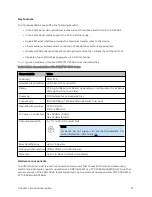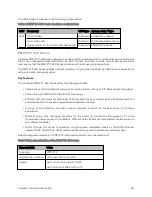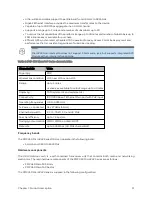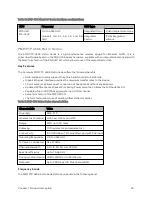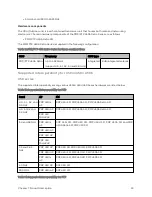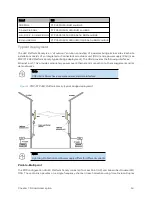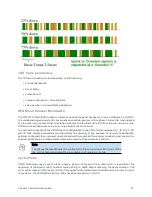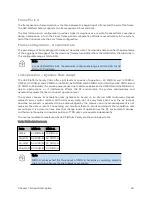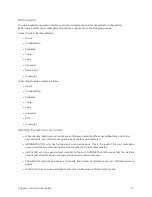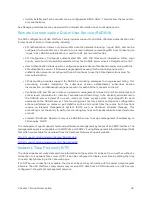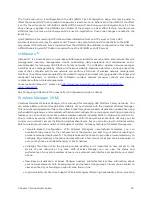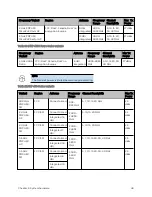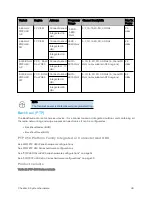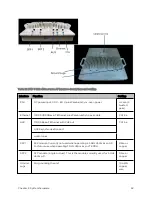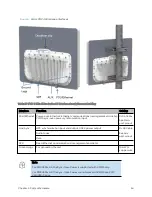
Chapter 1: Product description
39
Encr yp t ion
The 450 Platform Family supports optional encryption for data transmitted over the wireless link. The 450
Platform Family supports the following form of encryption for security of the wireless link:
AES (Advanced Encryption Standard): An over- the- air link encryption option that uses the Rijndael
algorithm and 128-bit keys and 256-bit key size to establish a higher level of security. AES products are
certified as compliant with the Federal Information Processing Standards (FIPS 197) in the U.S.A.
The default setting on an AP is "Disabled".
MIMO
Multiple- Input Multiple- Output (MIMO) techniques provide protection against fading and increase the
probability that the receiver decodes a usable signal. When the effects of MIMO are combined with those
of OFDM techniques and a high link budget, there is a high probability of a robust connection over a non-
line-of-sight path.
The sub-features that comprises the MIMO techniques utilized in the 450 Platform Family ODUs are:
l
MIMO-A: This technique enables 450 Platform Family radio to use a scheme that optimizes
coverage by transmitting the same data over both antennas. This redundancy improves the signal
to noise ratio at the receiver making it more robust.
l
MIMO-B: This technique provides the ability to double the throughput of a radio transmission under
proper RF conditions. Different data streams are transmitted simultaneously on two different
antennas.
MU- MIMO
Multiple- input multiple- output, or MIMO, is a range of technologies used to multiply the capacity of a
wireless connection without requiring more spectrum.
Although traditional MIMO techniques are focused on increasing the bandwidth available between two
wireless nodes, multi- user MIMO (MU- MIMO) applies these technologies to increase overall wireless
network capacity by allowing an access point to communicate wirelessly with more than one wireless
node at once.
A MU- MIMO access point features an array of antennas. When the AP decides to communicate with
multiple nodes at the same time, it creates or receives multiple simultaneous beams between each node.
This is in contrast to a traditional wireless system, where two wireless nodes cannot communicate on the
same channel to the same access point at the same time, without causing significant self-interference and
degrading the overall wireless network performance.
A MU-MIMO access point estimates and measures what a transmission from each wireless node ‘sounds
like’, by applying knowledge of the wireless path characteristics between the access point and node.
Known as channel estimation, this process is of vital importance; without it, the access point cannot
distinguish properly between wireless nodes, affecting performance.
Channel estimation is achieved at the access point in the downlink direction by sending a specific signal to
a wireless node, which the node then reports back. The uplink channel estimates are made in a similar
manner at the access point, by measuring the normal uplink communication to each node. These
measurements between the access point and the nodes provide a measure of the wireless conditions and
can be applied to other communications to/from the node and is known as channel sounding.
Summary of Contents for PMP 450 Series
Page 92: ...Chapter 2 System hardware 92 Figure 29 MicroPoP Omni antenna implementation pattern Vertical...
Page 134: ...Chapter 3 System planning 134 Figure 51 Mast or tower installation...
Page 135: ...Chapter 3 System planning 135 Figure 52 Wall installation...
Page 136: ...Chapter 3 System planning 136 Figure 53 Roof installation...
Page 137: ...Chapter 3 System planning 137 Figure 54 GPS receiver wall installation...
Page 158: ...Chapter 3 System planning 158 Figure 61 cnMedusa Antenna...



